Are you using Semrush to its full potential?
We talked to a few power users who are putting the platform to work in ways you might not have tried yet—from legal SEO defense to scalable keyword systems and AI-powered client reporting.
Here are four real-world ways these experts are using Semrush:
Get Ahead of the AI Conversation with Your Clients
Senior GEO & SEO Strategist David Schneider uses Semrush to start—and lead—conversations about how AI is reshaping his clients’ SEO visibility.
It’s 2025, and clients are asking: “What’s happening to our traffic?”
David answers with visuals pulled straight from Semrush—specifically, the Organic Research Positions report with SERP feature filters enabled to highlight AI Overviews.
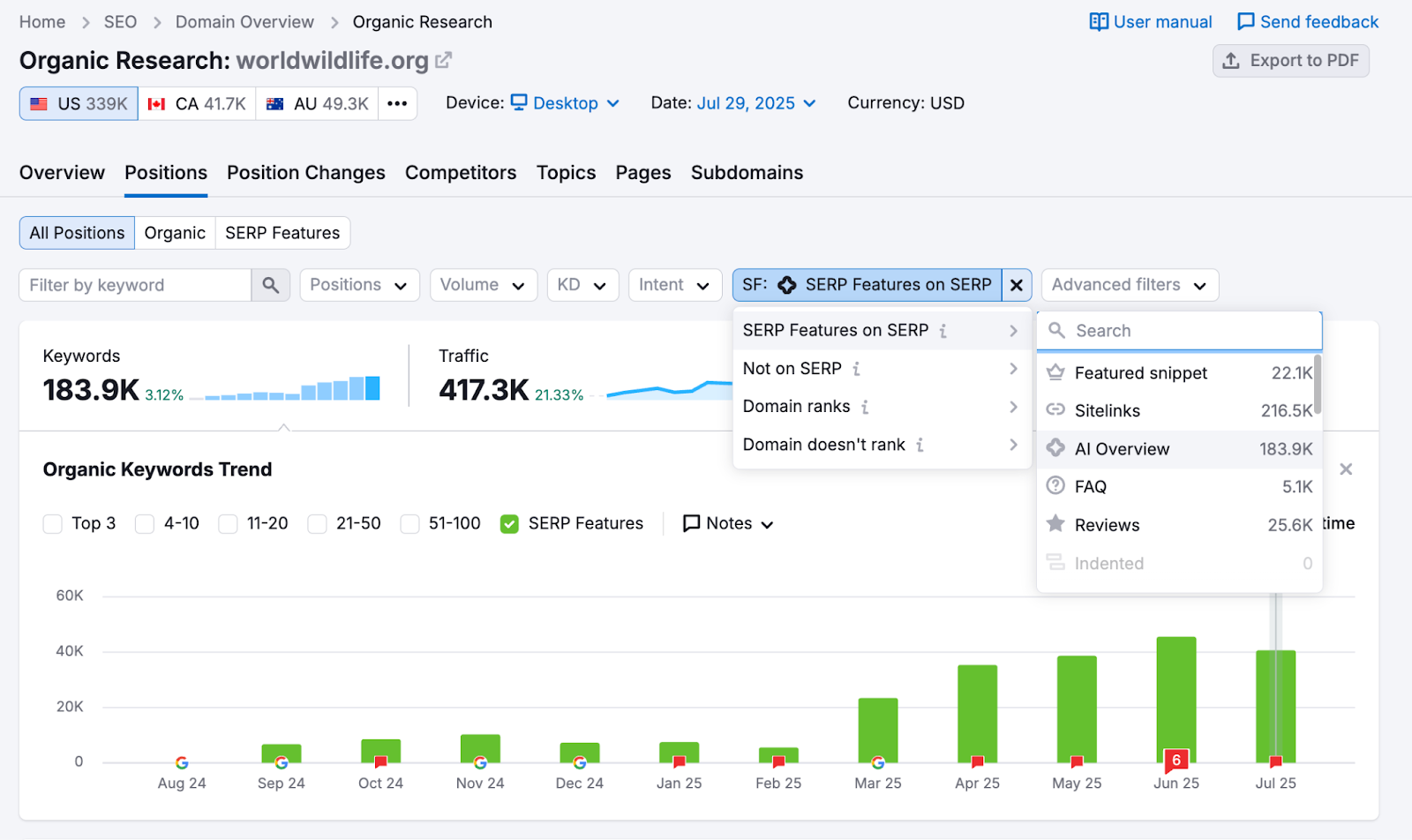
David says, “One of the biggest things clients always ask is ‘why are your clicks going down, what are we doing to combat that, and what's going on in the space?’ So I love this report.”
Then he screenshots the graph and drops it into his monthly reports so clients can see the trend for themselves.

“You can see… your impressions go up, your clicks go down, and at the exact same time, your AIOs are climbing, right? That’s a really good way to tell that story,” David says.
The graph tells a clear story, and paired with the My Reports suite, his team delivers automated updates with just enough manual context to drive action.
It literally cut our reporting time by 80% when we implemented this. [My reports are] automatically emailed to me every month. It’s great.
And when AI-related changes come up in conversation, David’s ready.
That readiness has helped retain worried clients, win new business, and reset unrealistic KPI expectations before they become problems.
I've been asked [about AI Overviews] probably five times in the last six months. It eases their mind because so many people are freaking out right now. I know for a fact it saved us clients… It even won me a brand new client. Being able to share these kinds of things builds trust.
Use Tags Like Architecture—Then Let the Data Guide You
Head of Digital Marketing Emina Demiri-Watson doesn’t just use Semrush for keyword discovery—she treats the tagging feature as the foundation for everything from strategy to performance audits.
Instead of just naming campaigns or funnel stages, she uses Position Tracking tags to mirror how her audience thinks about topics:
“You have to approach it like you would approach your website architecture. So it's not about the number of topics that you're doing, it's really thinking like a user would,” Emina says.
She uses a two-step strategy:
- First, she uploads her keyword research to Semrush, which she’s already clustered with custom scripts using models like BERTopic.
- Then, she tags each keyword with the corresponding topic that ties back to part of the website architecture. This gets reflected in her Position Tracking campaigns.
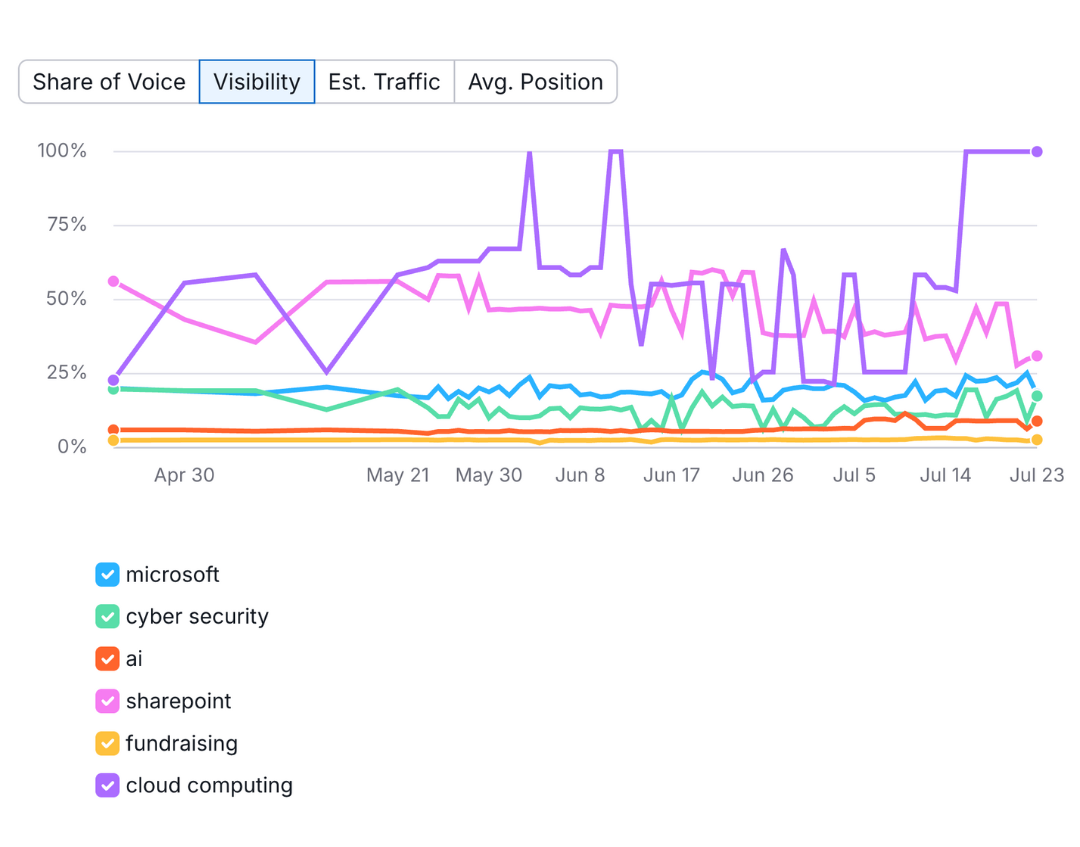
To make reporting as clear as possible, Emina also integrates the project with Google’s Looker Studio to report on each cluster’s progress.
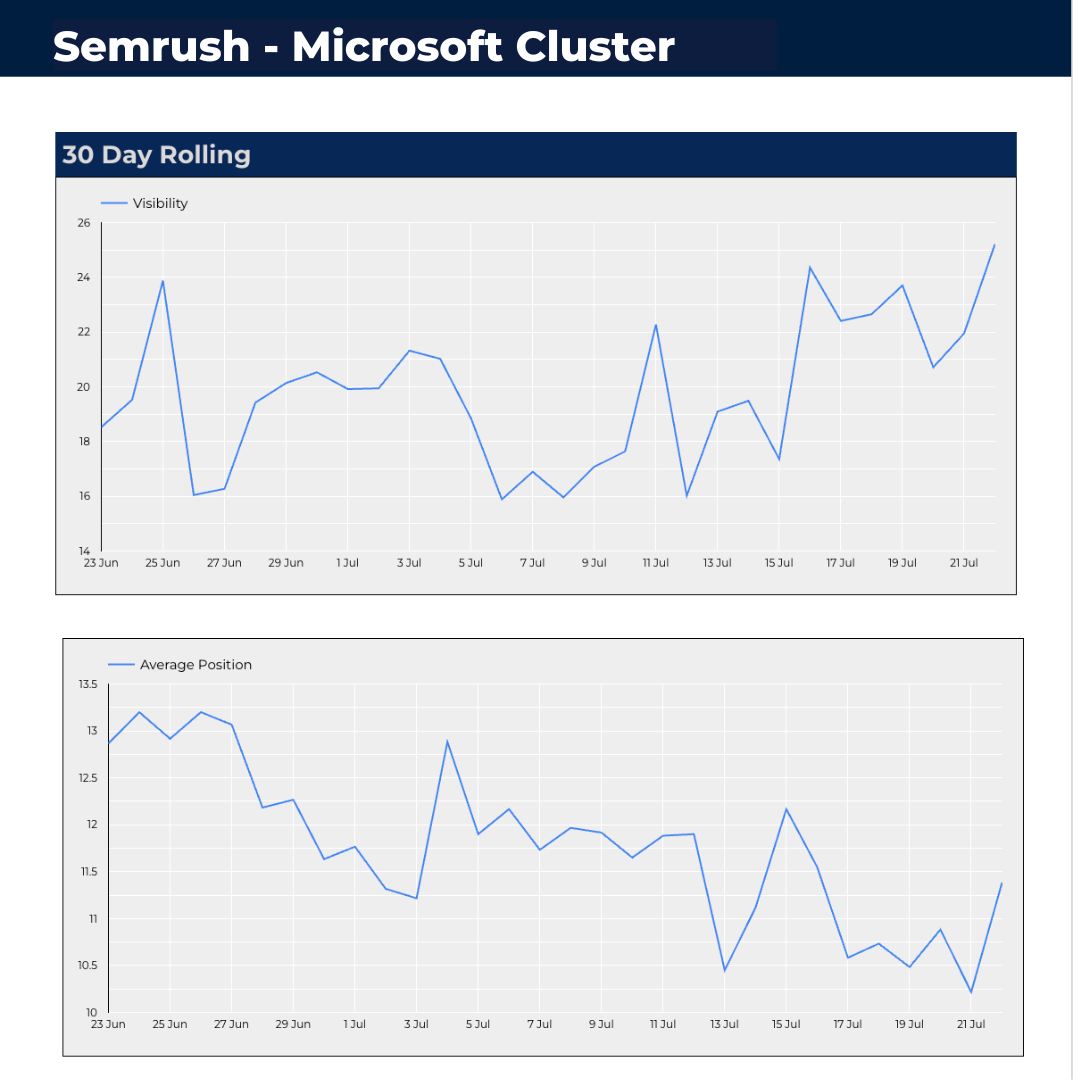
Emina’s strategic mindset makes it easy to evaluate what content is working, what needs to be consolidated, and how to explain gaps in performance to clients.
Even if you skip the LLM clustering and cluster manually for your tags, you are already doing something that will help you segment the data for reporting. Think about the topics your audience is interested in and use tags strategically to reflect their interests.
Scale Your Strategy with Smart Keyword Lists and AI Assistance
Romana Kuts runs a content and SEO agency and uses Semrush daily—not just for keyword research, but in her words, as the “spine” of her process across all client work.
I use Semrush literally daily, and I found that a lot of people use Semrush just for like, one thing… I was trying to use the tool as much as possible, literally in all the possible ways, and trying to build certain workflows from the beginning to the end.
Her process starts in the Keyword Magic Tool, where she builds keyword lists grouped by client and topic.
After entering a main topic keyword, she scans the keyword groups on the left to narrow down the results into more specific topics.
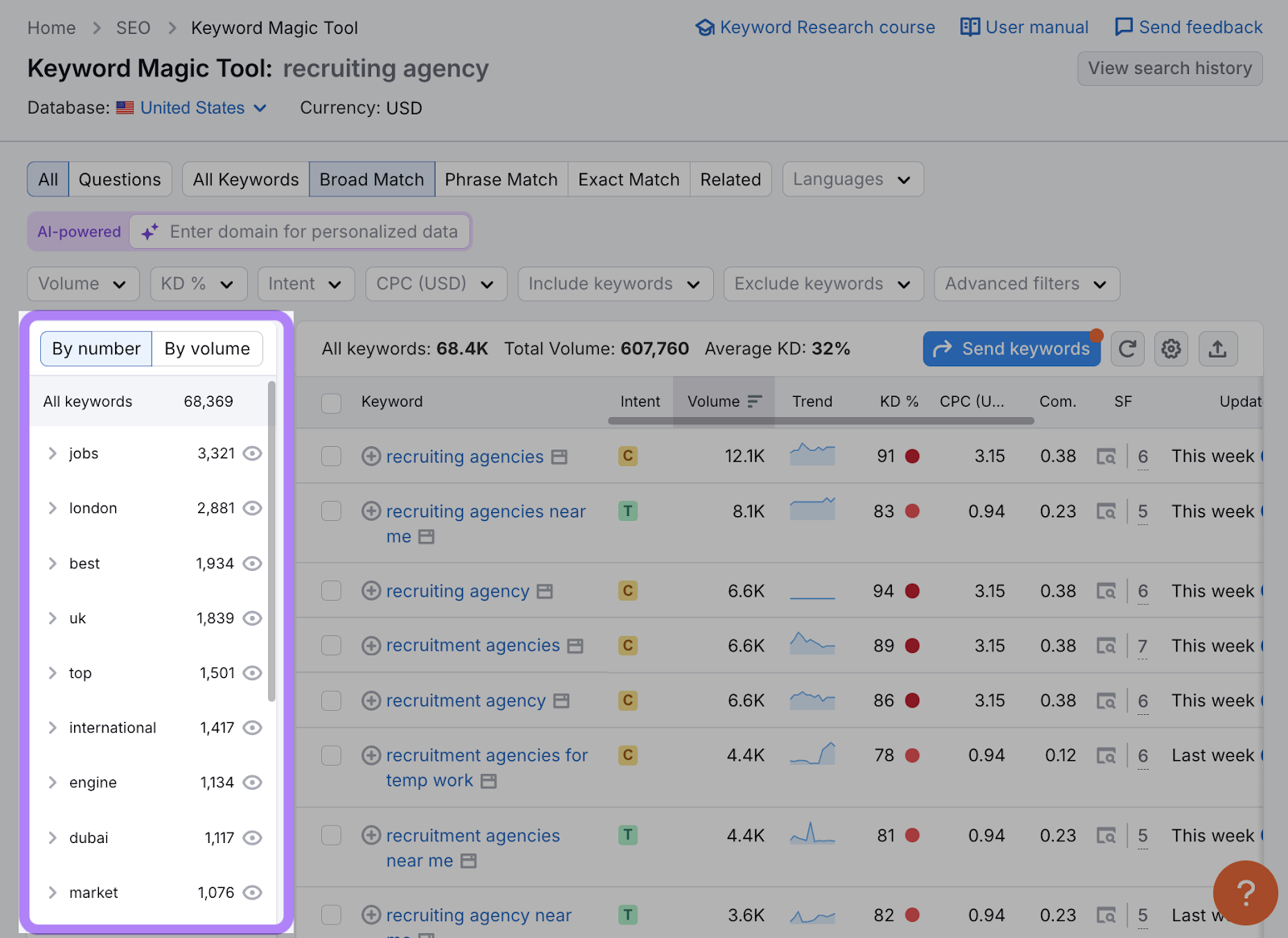
But that’s just the start of Romana’s workflow.
“We add, let's say, 10-15 keywords into one list, and we name this list as ‘client name and topic’,” she says.
These lists have a home in the Keyword Strategy Builder, where they can be quickly referenced and exported for more analysis.
Romana keeps things organized with a standard taxonomy, with the topic and client name labeling each list.
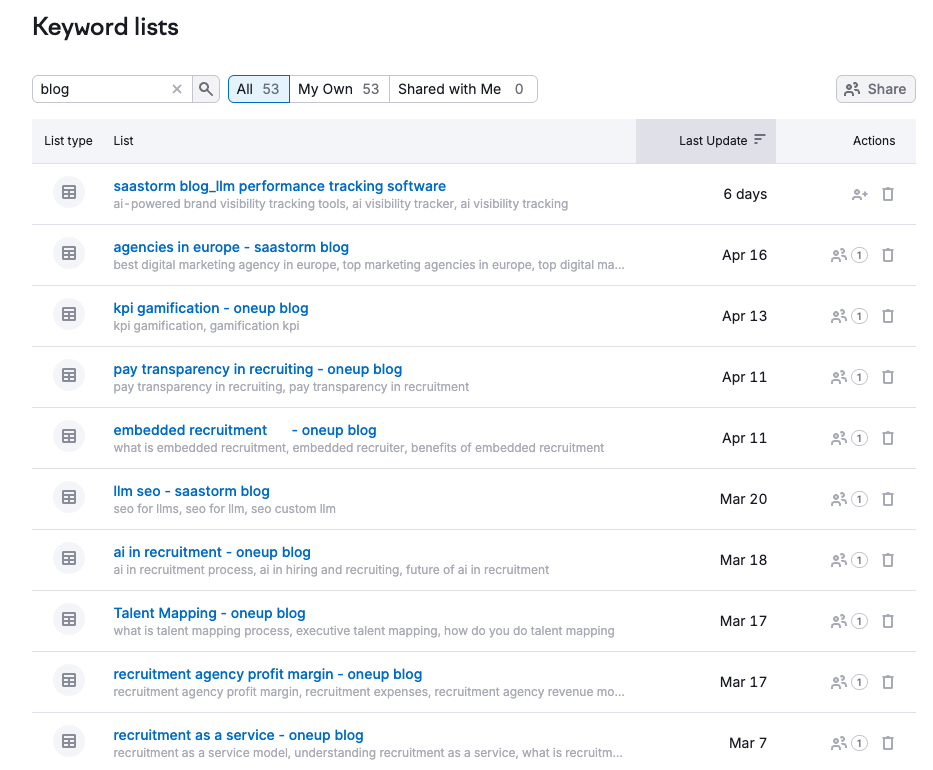
Romana usually creates 50 to 100+ topical lists per client, then exports them to a spreadsheet where she manually assigns titles, pain points, and funnel stages to each topic.
“The entire strategy is literally done within Semrush.”
Once content is published, Romana doesn't go back to manually set up tracking.
She reuses her structured keyword lists from the Keyword Strategy Builderand sends them directly to Position Tracking.

“I just go type the list and… choose all the keywords, send to position tracking… and that’s it,” says Romana.
But that’s not where she stops using her keyword lists.
Romana creates a custom ChatGPT project for each client, training the AI with the exported keyword lists from Semrush, plus other relevant details.
Each client has a separate ChatGPT project trained on their product, ICP, etc., and also on their target keywords… when I’m building these keyword lists and I export them [from Semrush], I also import them into ChatGPT.
That ChatGPT instance becomes her assistant for content brief generation and internal linking recommendations:
“As a result, ChatGPT knows what keywords are responsible for what article. It gives me the best internal linking suggestions because it knows what the anchor text would be for [each] article.”
Use Semrush Data for Decision-Making Evidence
Whether you're preparing a legal defense or buying a domain, Semrush data may just save your reputation—and your budget.
Veteran SEO and expert witness Bill Hartzer has two go-to uses for Semrush that might surprise even seasoned users: legal SEO defense and expired domain investigations.
As an SEO expert witness, Bill relies on Semrush as a third-party data source to resolve disputes in the SEO and digital marketing world.
In a recent lawsuit, a web design agency was being sued for millions of dollars after a client’s organic traffic plummeted post-redesign.
Around the same time as their website redesign, the site also saw a drop in rankings.
While the rankings came back after a month or so, traffic stayed low. And the company sued the design agency.
But Bill’s forensic SEO analysis told a different story:
In fact, it wasn't the redesign. It was actually the fact that there was an algorithm update, but also, there were AI Overviews that brought the site down. And so you're not getting as much organic traffic because of that.
Thanks to historical rankings and SERP feature data in Semrush, Bill was able to demonstrate that the agency's redesign wasn't the problem—it was a Google update that occurred at the same time as the redesign.
This evidence helped clear the agency of blame and avoid a lawsuit.
Domain Buying Due Diligence
Bill also cautions against jumping into domain purchases without proper research:
You really need to do number one, due diligence on a name… I’ve seen a name and hey, it has a million backlinks and all sorts of sites… looks great, but in reality, if you don't dig into the Semrush data and see what it was ranking for prior… the domain's been burned.
Bill uses Semrush to check for spammy link profiles, historical rankings, and sudden topic mismatches.
Some domains may “look great” in terms of their number of backlinks, but if they have a questionable or irrelevant history, it can sabotage future SEO.
For example, this expiring domain has a ton of links, which on the surface suggests it could be a good purchase.
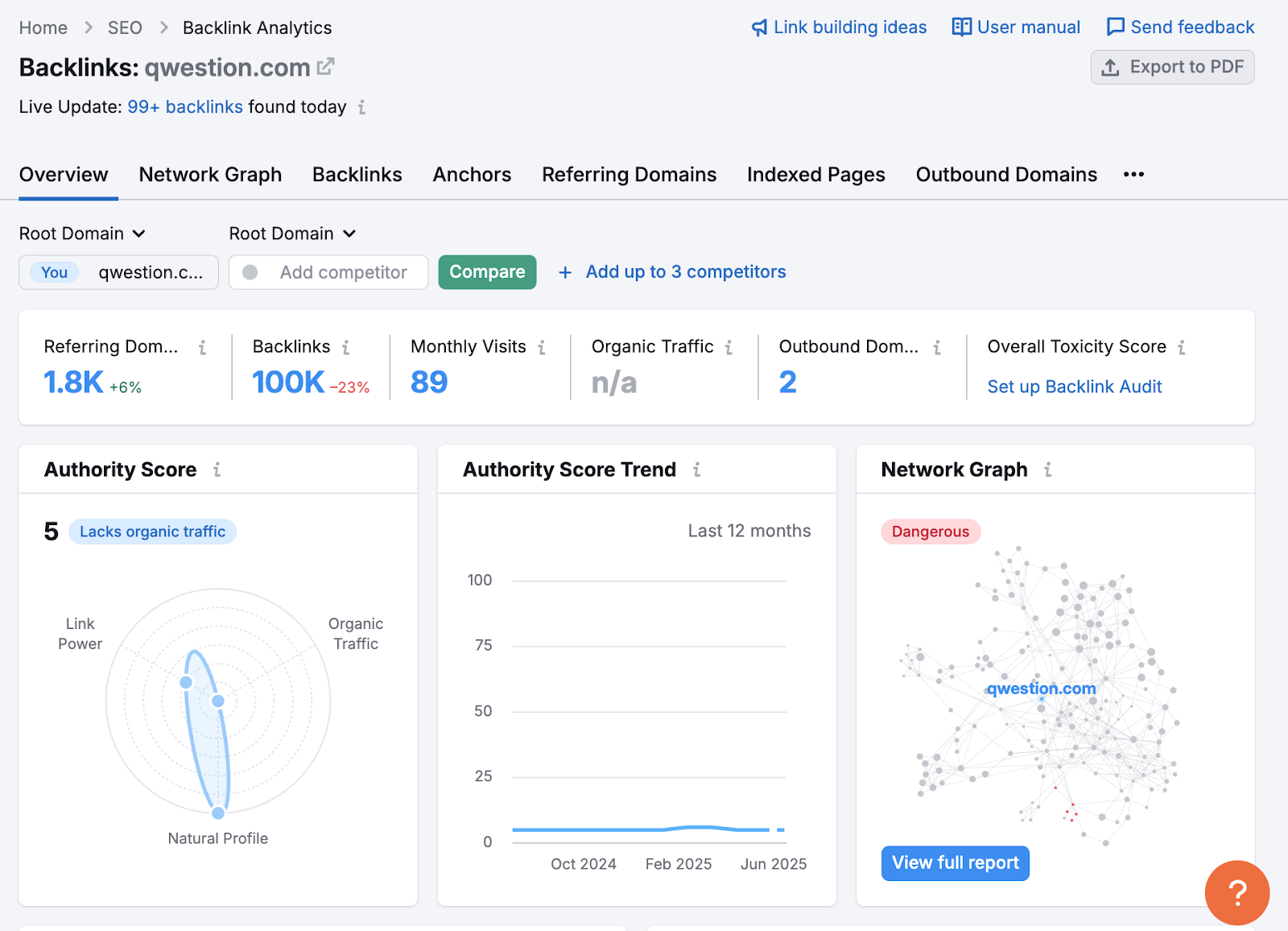
But even though a website might have a lot of backlinks, Bill can tell when it’s low quality—or has been used for spam—by looking at the anchor text.
For example, if many of the links use phrases like “louis vuitton outlet,” “replica designer,” and “discountshoesmart,” that’s a red flag for Bill.
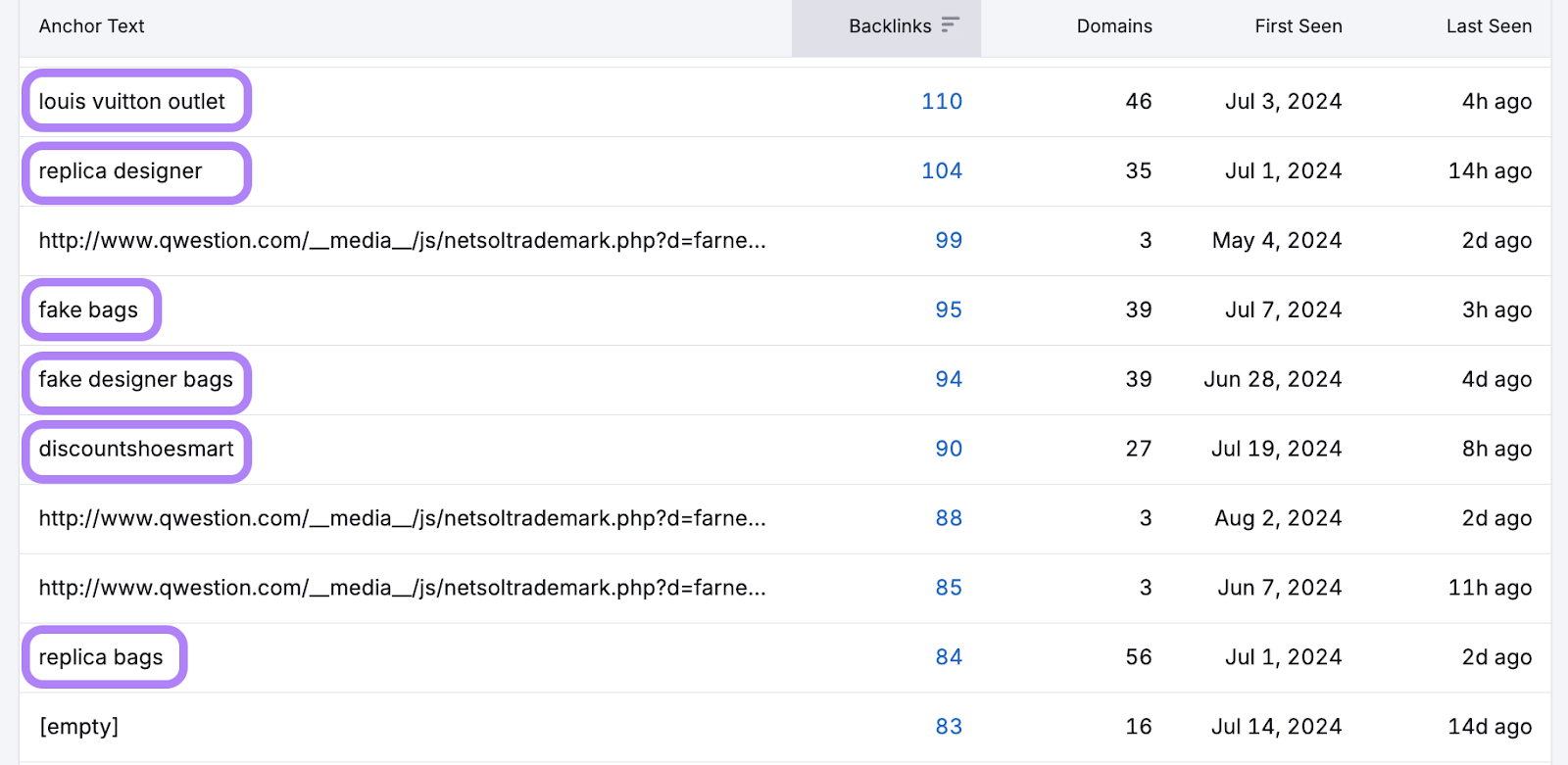
It suggests the site was probably used for spam or black hat SEO in the past and is now "burned."
Where Will Semrush Take You Next?
Whether you're defending SEO in court, scaling AI content engines, or creating a strategic client plan, Semrush can do far more than most people realize.
These experts aren’t just running audits and checking traffic—they’re building full-blown systems powered by Semrush data.
That’s the real magic of the platform: with the right strategy, Semrush becomes the engine that drives your work forward.


